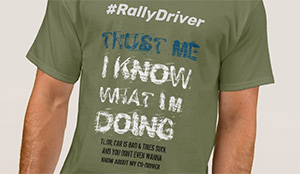Is Rally Argentina Too Tough, or the WRC Too Soft?

We have now had two rough gravel rallies in a row, with two opening days of carnage amongst the front-runners of the WRC. In Mexico, the first day claimed 7 WRC teams that were forced to retire and return under Rally 2. Now in Argentina, 5 crews retired on day one with several others suffering large time losses due to damage. This year’s Rally Argentina was meant to be a “throwback” event reminiscent of the old endurance rallies in the past. If you take a look at the overall times at the end of the first day, the top 10 are separated by over 9 minutes. Those are the types of margins that you would expect to see at the end of a modern WRC rally, not just after the first leg! It definitely has the feel of a classic rally.
“Endurance” has been buzz-word of late with the proposed itinerary of the Tour de Corse and the long car-breaking stages of this weekend’s Rally Argentina. However, as I was listening to the carnage unfold on WRC radio yesterday, I began to wonder, are these “endurance” events getting too tough for the WRC, or is the modern WRC just too soft?
There is no doubt that over the past few years, the trend has been for rally organizers to move towards more of a “sprint” format. Several factors have contributed to this phenomenon. Due to TV constraints and the introduction of live stage coverage, the lengths of the individual stages and total competitive distance has shrunken over the years. In addition, the design of the rallies has shifted from a traveling caravan from town to town towards a “wheel and spoke” design with a central service park. While the current generation of WRC cars are still plenty tough, I can’t help but think that the teams have designed them with a sprint rally mindset. The design of the cars seems to have moved towards that of a circuit-racing car where toughness and reliability sometimes takes a back seat to outright pace.
In addition to the durability of the cars, I wonder about the mental toughness and concentration levels of the drivers. Compared to the drivers of prior decades, the current crop of WRC drivers have learned their trade on relatively shorter stages and less demanding events. Out of curiosity, I did some maths to figure out the average rally length from 2002 compared to 2014. What I found was that on average, the 2002 season featured rallies that were 84km longer than in 2014 (429km vs. 345km). I don’t have the statistics that go back further than 2002, but if I did, I believe that the average stage length would be even longer. The point is that these guys have been competing with a “flat out” style from start to finish. While, this can easily be achieved on a 15 to 20 kilometer stage, it is near impossible on a 50-60 kilometer stage. When today’s WRC drivers are faced with such a challenge, I don’t think that they are changing their approach to deal with the challenge.
So, is all this a problem? The endurance events are a bit of a double-edged sword. While we were all excited to see longer stages in the WRC, over the past 2 rallies, those long stages have led to frequent retirements and large gaps by the end of just the 1st day. That is the cost of endurance rallies; they don’t usually lend themselves to close battles on the time sheets. I don’t think that the problem lies with the length of the stages though. At the end of the day, this is RALLYING and it is supposed to be TOUGH! Instead, the teams and drivers need to make a paradigm shift to make sure that they make it to the end. The stages aren’t too difficult, I just think that the WRC needs to toughen up a bit!



